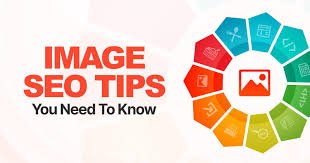Keywords are a vital component of SEO, helping search engines understand the content of your website and rank it accordingly. Knowing where to place these keywords can significantly enhance your website’s visibility and organic traffic. In this post, we’ll explore the best places to strategically position your keywords for optimal SEO results.
1. Title Tags
The title tag is one of the most important places to include your primary keyword. It tells both users and search engines what your page is about. Make sure your title is catchy and includes your main keyword towards the beginning. For tips on creating effective titles, check out our SEO Services.
2. Meta Descriptions
Although meta descriptions don’t directly influence rankings, they play a crucial role in click-through rates. Including your keyword in the meta description can entice users to click on your link. Write a compelling description that accurately reflects the content of your page. To improve your meta descriptions, explore our Content Writing services.
3. Headers (H1, H2, H3)
Using keywords in your headers is essential for SEO. The H1 tag should include your main keyword, while H2 and H3 tags can contain variations or related keywords. This structure not only helps search engines understand your content but also makes it easier for readers to navigate. For more on effective website structure, check our Website Development page.
4. Body Content
Naturally incorporating keywords throughout your body content is critical. Aim for a keyword density of 2-5% to avoid keyword stuffing, which can harm your rankings. Place keywords in the introduction, middle, and conclusion of your content while ensuring it flows well. For guidance on creating engaging content, visit our SEO page.
5. Image Alt Text
Including keywords in your image alt text helps search engines understand the content of your images, improving your chances of ranking in image searches. Use descriptive alt text that accurately represents the image while incorporating your keywords when relevant. For tips on optimizing your visuals, our Prints & Design services can assist.

6. URL Structure
When creating a URL for your page, include your primary keyword. A clean and keyword-rich URL can improve your search engine rankings and make it easier for users to understand the content. For expert help with your URL structure, check out our Pay-Per-Click services.
7. Internal Links
Using keywords as anchor text for internal links helps establish context for both users and search engines. Link to other relevant pages on your site using keyword-rich text to improve your site’s overall SEO and user navigation. To learn more about internal linking strategies, visit our Google My Business page.
Conclusion
Placing keywords strategically throughout your website is essential for effective SEO. By incorporating them into title tags, meta descriptions, headers, body content, image alt text, URL structures, and internal links, you can significantly enhance your website’s visibility and drive organic traffic.
Call to Action: Ready to optimize your website for search engines? Contact us today at Syed_66@hotmail.com or call 0161 399 3517. Visit our website at Social Media Max to explore our range of services, including Social Media Management and Email Marketing. Let’s work together to achieve your digital marketing goals!

